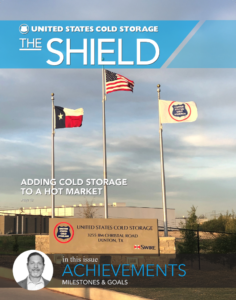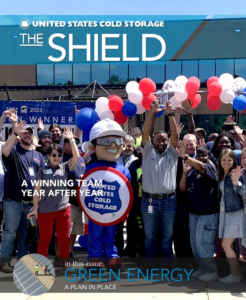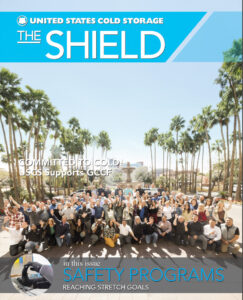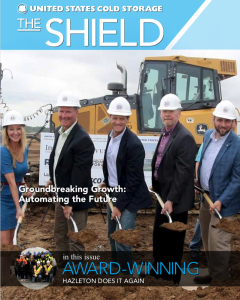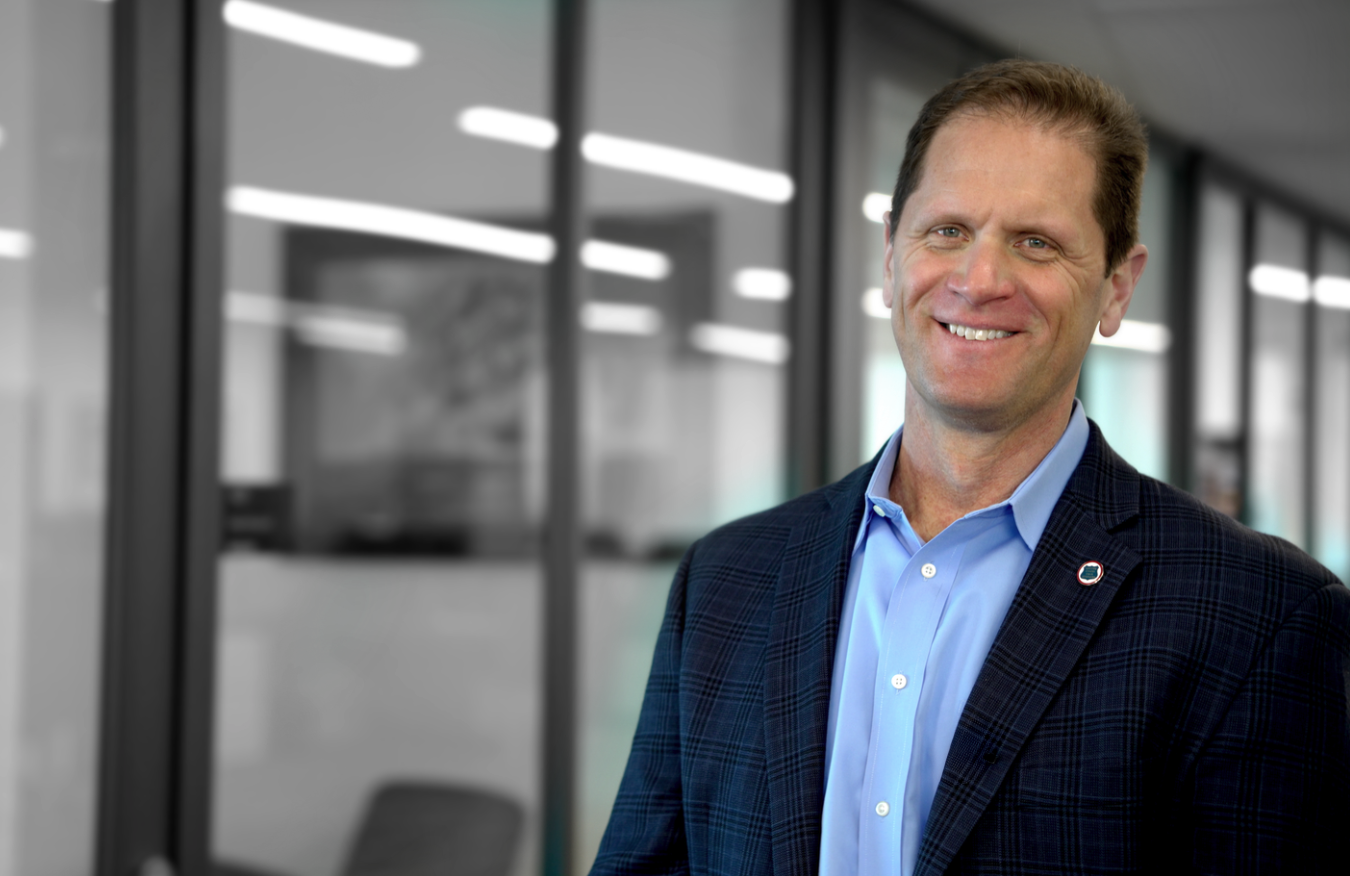
Happy holidays friends of the Cold Chain,
As we close out a very impactful year, I want to take a moment to reflect on what has been a period of progress, dedication, and meaningful progress for our organization.
We began the year with a clear theme, Mission: Execution.
The message was simple…stay focused on what matters and deliver for our customers and the Cold Crew. I am proud to say this team moved the mission forward in significant ways, and the impact shows in what we achieved.
A key highlight from this year, we opened up four major facility expansions:
Tulare and McClellan, CA along with Lebanon and Hebron, IN. All came online successfully, each one powered by our latest automation systems that continue to define the next generation of our network.
These sites represent some of the most advanced operations in our company further advancing our leadership in operations performance and accuracy, energy efficiency, and the reliability and flexibility our customers count on.
We also advanced our sustainability goals in significant ways. We energized large solar arrays in California, specifically in McClellan and Tulare. We also broke ground on two more in Fresno and Lebanon. Our energy efficiency improved by more than 3.5% and our renewable energy utilization increased from 10% last year to almost 20% this year. We are already planning steps to reach above 40% in 2026 as we move toward our goal of 100% renewable energy by 2030.
Our waste reduction initiative continues to make meaningful progress. This year alone we diverted more than 15 million pounds of organic and recyclable material from landfills.
That puts us a third of the way toward our target of redirecting 65% of destruction orders away from landfill disposal by the end of 2027. This work matters because it strengthens our stewardship of the planet and reflects the responsibility we carry in every community we serve.
Our major technology transformation continues with strong momentum. Our Warehouse Execution System, Phenix, functions as the backbone of our operating model today as we extend this strength across the network. By the end of this year nearly two-thirds of the organization will be operating on the platform, and we remain on schedule to complete the transition by the end of 2027. Phenix proves its value every day by delivering more reliable service, clearer transparency, and the heightened efficiency our customers expect.
I am proud to share that we are on pace to achieve the safest year in our history surpassing the previous record set in 2023.
Our commitment to safety sits at the center of everything we do. This is the clearest expression of our culture and our values. Nothing is more important than protecting our people.
Mission: Execution was more than a theme in 2025, it shaped how we operated.
Throughout the year we delivered exceptional performance, with inventory control, BRC quality results, on-time delivery within our CSC program, truck turn times, and driver satisfaction reaching some of the strongest levels we have ever recorded. It is work to be proud of, and we carry this same focus and discipline into 2026 as we continue to raise our standard of excellence.
None of this happens without the commitment of our leadership team, the hard work and heart of our Cold Crew, the support of our board, our parent company Swire, and the essential partnership of our vendors.
I am grateful for our customers who trust us with their products and their business every day. Thank you for your partnership and for everything you helped make possible this year. I wish you and your families a wonderful holiday season and a successful year ahead.
Together we will carry this momentum into 2026 and continue to strengthen our capabilities and remain the premier choice for cold supply chain services in North America.
To an exceptional 2026 and beyond,
Larry Alderfer | President & CEO

Hooked On a Feeling
US Cold McClellan Park celebrates first win of Gorton’s annual Warehouse Award.
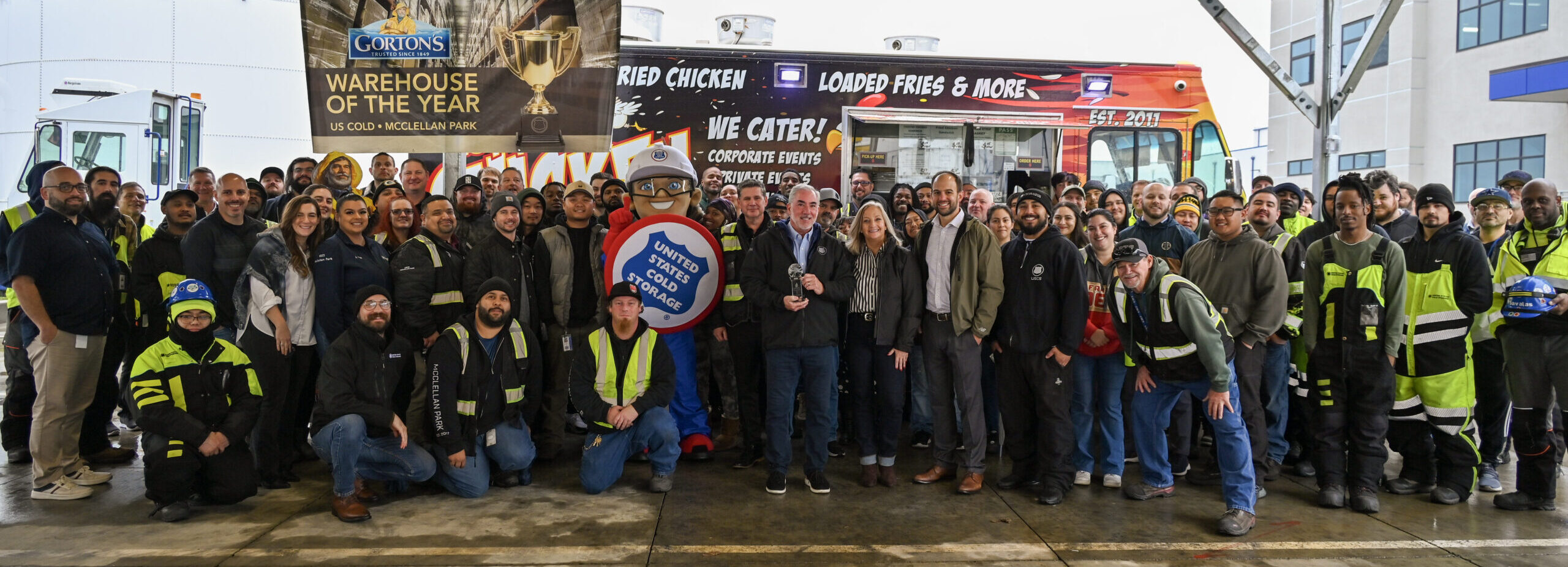
It seems most fish stories are about the “one that got away.” Yet that’s not the case for USCS McClellan Park, CA, whose 2024-2025 performance earned its first annual Warehouse Award from Gorton’s, a leading frozen seafood processor.
This Sacramento-area facility receives, stores and then ships frozen Gorton’s products throughout the West. It’s one of nine refrigerated warehouses handling Gorton’s products and competing for top warehouse honors.
There are as many as 10 “hard” key performance indicators (such as shipping errors, inbound and outbound loading times) as well as additional “soft” evaluations. These consider sense of urgency, the quality and timeliness of communication and ability to formulate and execute creative solutions to problems and urgent situations.
Traveling to present the award in October were Gorton’s officials Nicole Black, Senior Fulfillment & Warehouse Manager; and Adam Ercolini, Senior Manager of Distribution. “McClellan Park earned 1,220 points out of a possible 1,345 available points in our program,” says Black. “This was a decisive win for their team. They performed at a high level in all areas. General Manager Steve Palefsky is very proud of his team, and rightfully so. Steve is a highly effective leader and the performance of the McClellan Park team is a testament to his dedication. He leads by example and the responsiveness from his entire team is consistently outstanding.”
She adds, “Our scorecard program is very competitive. We see a high level of engagement among all team members at every site—all striving to deliver strong results.
Earning first place is a significant achievement and worthy of bragging rights.” Black and Ercolini met the first evening with those McClellan Park Cold Crew members directly involved with Gorton’s day-to- day business. The following day, Gorton’s and USCS also hosted a facility-wide party luncheon and ceremony to honor McClellan Park.
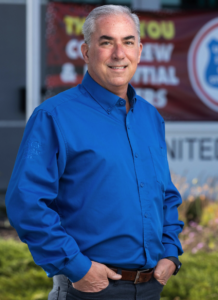 “I asked if it would be possible to include the team members who touch our business every day to be included in a separate gathering the night before the award ceremony and luncheon,” says Black. “I feel it is important to recognize employees at all levels in these events, because achieving this win is truly a team effort. In visiting, I was able to meet multiple team members who contribute to our success day in, day out. It was fantastic.”
“I asked if it would be possible to include the team members who touch our business every day to be included in a separate gathering the night before the award ceremony and luncheon,” says Black. “I feel it is important to recognize employees at all levels in these events, because achieving this win is truly a team effort. In visiting, I was able to meet multiple team members who contribute to our success day in, day out. It was fantastic.”
“Fantastic” also describes Palefsky’s emotional response on behalf of McClellan Park. “Achieving Gorton’s Warehouse Award is a huge win for our McClellan team, it reflects the hard work, pride, and consistency our crew brings every day,” he says. “This recognition means a lot because it validates the dedication our team shows in supporting Gorton’s and doing things the right way. I could not be prouder of our entire team and especially those who touch the Gorton’s products each day.”
A 25-year company veteran, Palefsky also has seen the growing relationship between USCS and Gorton’s.
“It’s been incredible to see how Gorton’s has continued to grow with USCS over the years, and I’ve been privileged to be part of that journey. Together, we’ve supported multiple sites and projects, and we’re proud of the long-term partnership our companies have built,” he says. “Our relationship goes beyond business as it’s a true collaboration between great professionals on both sides, working together to deliver exceptional service to Gorton’s and their customers. We look forward to continuing that high level of service for many years to come.”
Expanding in Georgia to Match Industry Demand
United States Cold Storage plans Phase 3 Build-Out at Award- Winning McDonough, GA, site.
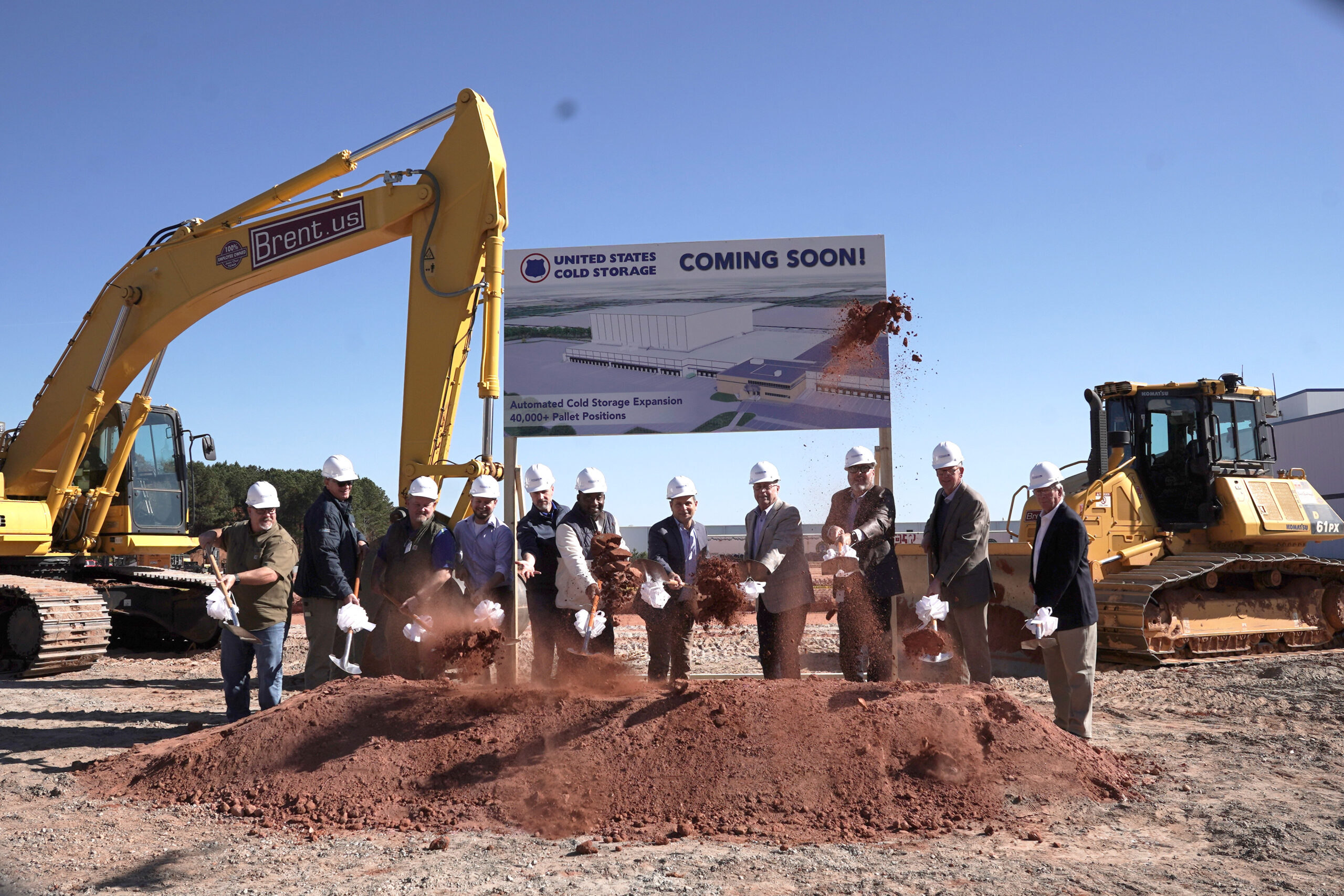
United States Cold Storage Inc. expects by May 2027 to complete a 14.8 million-cubic- foot refrigerated addition at its McDonough,GA, warehouse, located less than 30 miles southeast of Atlanta. The third and final build-out will include some of the industry’s latest storage and retrieval automation and bring the operation’s total footprint to more than 21 million cubic feet.
“This expansion isn’t just about adding cubic footage—it’s about future-proofing the business by increasing our capacity, efficiency, and competitiveness in such a fast-growing, temperature-sensitive market,” says General Manager Dedric Thomas. “We want to provide current and future customers more opportunities for growth without compromising existing operations. Ultimately, it means we can better serve customers with more space, faster turnaround times and the ability to handle larger or more complex orders.”
USCS broke ground in mid-November for the attached expansion, which will ultimately include two new refrigerated, 35F° rooms.
One 13.2 million-cubic-foot room will house an automated storage and retrieval system (ASRS) while a smaller room will house some of the industry’s most advanced automated layer pick equipment. The expansion also will include more than 41,000 additional pallet positions, 26 more dock doors and two additional rail dock doors.
Interestingly, USCS’s McDonough site already casts a big shadow because of its industry performance. It has earned repeated annual awards from customers for its receiving, storage, handling and shipping against customer performance criteria metrics.
“We look forward to this expansion as a critical way to strengthen long-term client relationships through reliability, flexibility, and scalability,” says Thomas.
The Front Line of Service, Solutions
CAM event highlights best practices for customer account leaders who interact every day with USCS’s VIPs—the customer.
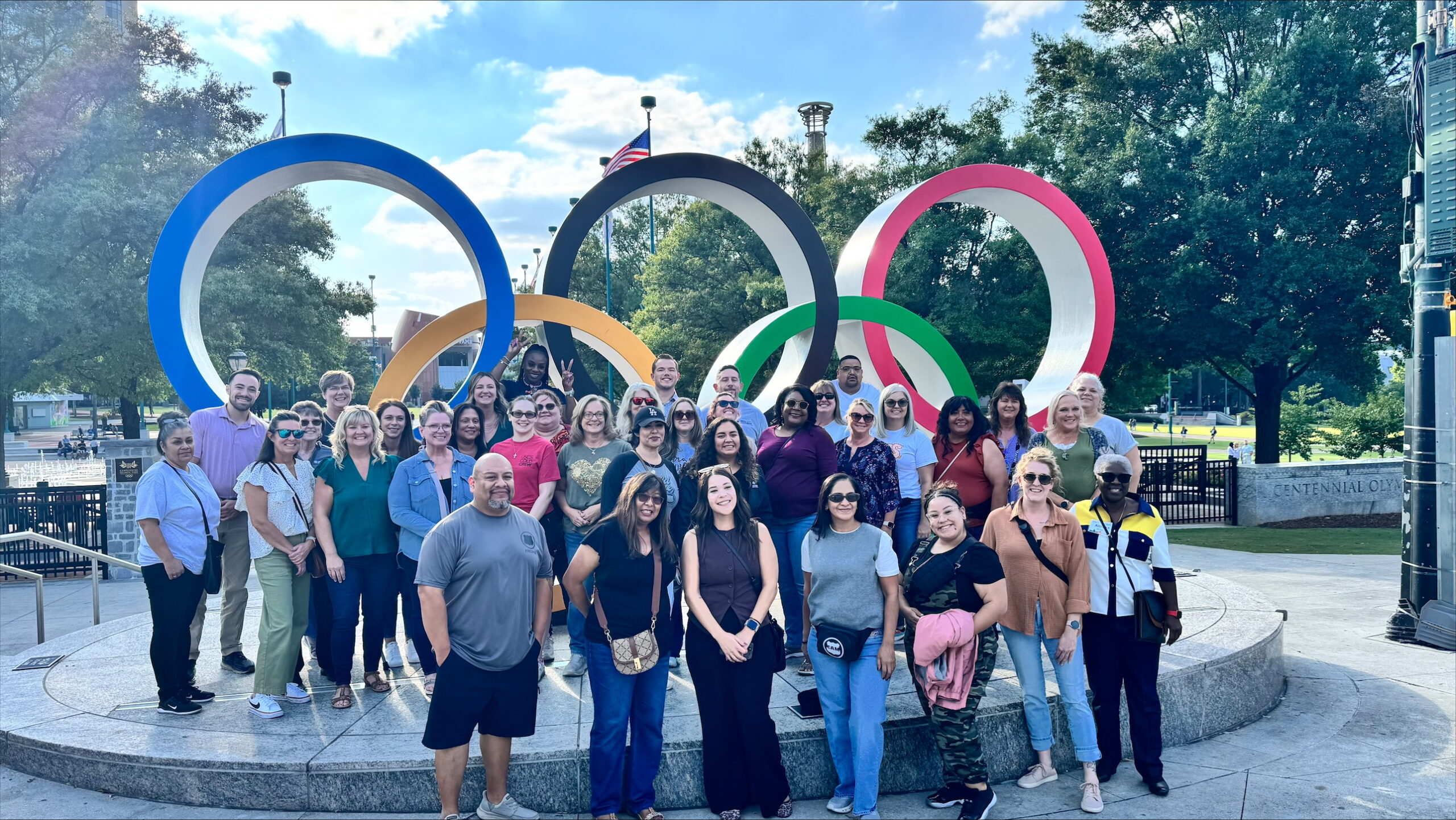
They say size matters and the word “big” is certainly one way to describe everything about United States Cold Storage. It boasts more than 4,000 Cold Crew members at 40 sites in 13 states from coast to coast. Its operations collectively span more than 446 million cubic feet of warehouse space and it’s responsible for millions of pounds of refrigerated and frozen foodstuffs traveling the nation’s highways and railroads in all directions, every day.
 Then again, some of the company’s smallest departments carry the most importance. Consider USCS’s Customer Account Manager (CAM) group that operates strategically between customers and the company. Every day, these 50 managers and supervisors carry big responsibilities for communication and problem solving as they interact with USCS’s processor-shipper customers. These CAM representatives likewise connect with nearly every other USCS internal department including operations, information technology and logistics and transportation.
Then again, some of the company’s smallest departments carry the most importance. Consider USCS’s Customer Account Manager (CAM) group that operates strategically between customers and the company. Every day, these 50 managers and supervisors carry big responsibilities for communication and problem solving as they interact with USCS’s processor-shipper customers. These CAM representatives likewise connect with nearly every other USCS internal department including operations, information technology and logistics and transportation.
Suffice it say that the CAM group is unique and its members need face-to-face time to learn, laugh, encourage one another and share best practices. And that’s just what happened during the group’s third annual in-person summit, a three-day event this September in Atlanta.
The agenda featured a panel discussion with representatives from USCS customers Gorton’s, King’s Hawaiian and Califia Farms. They shared first-hand perspectives about USCS as a supply chain partner. More internally focused sessions let CAM members discuss (1) working with shared customers across sites and (2) best practices learned from customer service “fixes and fails.” USCS department heads also provided updates about companywide projects, using Tableau, a Salesforce business analytics software; and LYNX, a new self-service data portal for customers. Last but not least, this year’s event provided time as well for group networking.
“This was our best Customer Accounts Meeting yet,” says Natalie Larson, USCS Manager of Strategic Partnerships. “After three years of bringing the group together, it has been a pleasure to watch the relationships form and grow across the regions. During our first meeting, most people sat with those they knew within the region. This year everyone was mingling and catching up. It’s noticeable as well that CAM maintains the relationships throughout the year, even though we all sit in different parts of the country. Platforms and programs—everything from Microsoft Teams to management skills training, ICE academy, and Cold Chain Institute—keep us interacting.
“The most encouraging thing to me was the collaboration among the group,” she concluded. “We had multiple opportunities to work together. Outside of that, I love to see all the side conversations in between events where they are all continuously learning. This group’s dedication to servicing the customer as best as possible – is unmatched!”
 Christine Janes
Christine Janes
Customer Account Supervisor
Denton, TX
Region: South
Q: What do you like most about the annual CAM meeting?
Janes: What I like most about getting together annually for our CAM meeting is being able to collaborate with other regions. Learn about their customer base and best billing practices.
Q: How does the meeting help with your day-to-day internal work?
Janes: It helps in my day-to-day internal work life by having the support of other regions. Having the lifeline helps to eliminate errors and in turn makes the customer happy.
Q: How does it help you better interact with USCS’s customers?
Janes: It helps to communicate and interact with customers better, knowing how their accounts are handled in other locations that are similar to your warehouse. Customers appreciate the consistency.
Q: What’s something you took away as new from this year?
Janes: I learned there were several additional tools of reporting, which have come in very handy. I’m very excited about the new Lynx Customer Portal.
 Dana Rissmiller
Dana Rissmiller
Customer Account Supervisor
Quakertown, PA
Region: North
Q: What do you like most about the annual CAM meeting?
Rissmiller: I really enjoy meeting with the group to collaborate about our customers and explore what we can do to improve our services.
Q: How does the meeting help with your day-to-day internal work?
Rissmiller: When we have shared customers, it’s been helpful to know we have other warehouses we can reach out to for help with questions and support.
Q: How does it help you better interact with USCS’s customers?
Rismiller: I feel more confident interacting with customers when I know we have support at all levels with our customer— extending from our Customer Experience group all the way to other warehouse operations.
Q: What’s something you took away as new from this year?
Rissmiller: A customer requested to be billed the same way across the country and we’ll now do so. We are now collaborating on all similar accounts when it comes to customer billing.
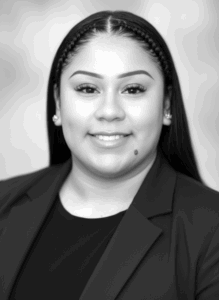 Perla Eatmon
Perla Eatmon
Customer Account Supervisor
McDonough, GA
Region: Southeast
Q: What do you like most about the annual CAM meeting?
Eatmon: I value the opportunity for the entire Customer Accounts team—across all our sites—to come together. It’s a unique chance to align efforts, share best practices, and discuss common challenges. Whether it’s brainstorming solutions for obstacles we struggle with or providing advice on best practices, the collaborative environment fosters a sense of unity and shared purpose. Additionally, we cover key updates on billing, company- wide developments, and new tools being introduced. This helps ensure that we’re all on the same page and prepared to address evolving customer needs.
This meeting not only strengthens communication within our team but also allows us to build stronger relationships across sites, making it easier to share resources and support one another in achieving our goals.
Q: How does the meeting help you in your day-to-day internal work?
Eatmon: CAM helps clarify expectations and strengthens communication across my team. By better understanding current initiatives, priorities, and process updates, I can perform my daily tasks more efficiently and with greater alignment to company objectives. It also ensures I know exactly who to contact for support or information, which streamlines internal workflows.
Q: How does it help you better interact with USCS’s customers?
Eatmon: This year’s CAM meeting helped me better interact with USCS’s customers because it gave us dedicated time to meet with three different customer representatives. It was extremely valuable to hear directly from them about what we do well and what sets us apart from other cold storage facilities.
We also discussed areas where we can improve, and that feedback allows us to learn, grow, and strengthen our service. These insights help us approach customer interactions with a clearer perspective and they encourage us to think about how we can enhance our performance across the entire network and grow with all of our customers.
Q: What’s something you took away as new from this year?
Eatmon: I gained a deeper understanding of evolving tools like Tableau and LYNX, as well as new processes implemented to support us. With more insight about these updates— especially how they tie into customer service and operational efficiency—I have a better perspective on how we can continue to improve our services. It also highlighted areas where I can adjust my own approach to better support both internal teams and external teams (customers).
 Christian Martinez
Christian Martinez
Customer Account Supervisor
Fresno, CA
Region: West
Q: What do you like most about the annual CAM meeting?
Martinez: It’s comforting to see that other CAM members experience similar issues. Whenever we struggle, it’s valuable to know that we are not alone and that we have the ability to reach out for help. I love that we can bounce ideas between one another and that makes all of us better at what we do.
Q: How does the meeting help you in your day-to-day internal work?
Martinez: I find it inspiring to see the entire CAM team together and to hear about the projects each site is working on. By combining my own experiences with the knowledge I’ve gained from others, I’ve been able to enhance my team and build a stronger unit.
Q: How does it help you better interact with USCS’s customers?
Martinez: We have so many dedicated individuals who genuinely love their work and strive to meet our customers’ needs and this has helped me better understand and define what “Best In Cold” really means. It’s not enough to simply say, “We Care.” When we demonstrate that we care through our actions, it speaks volumes to our customers. The way US Cold comes together truly shows our customers that WE CARE!
Q: What’s something you took away as new from this year?
Martinez: This year, I was new to the billing process and I want to continue learning next year so that I can become the go-to person for all billing-related matters. Billing is a completely new experience for me, but I believe that with hard work and support from my fellow CAM team members, I can achieve this personal goal. There are no short cuts to success, your hard work and dedication is your success.
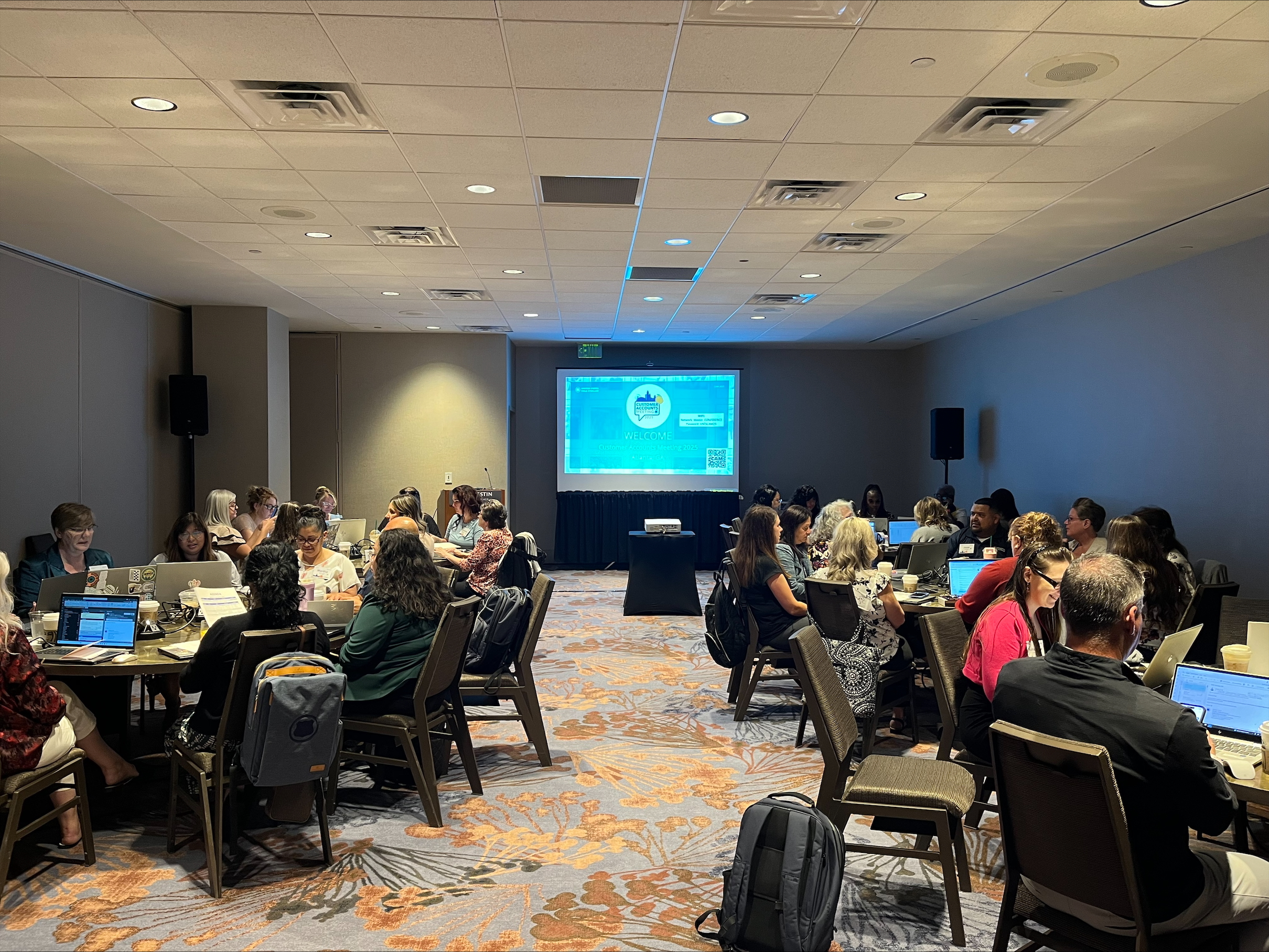
Partners – In Progress
USCS hosts 11th annual Carrier Conference, honors transportation partners.

Let’s face it: digital technologies make it much easier to communicate quickly and efficiently.
Then again, there are times when technology can’t replace the impact of face-to-face connections. And when it’s important to invest in relationships with industry partners, it’s critical to put together an event—rather than an email. That’s just what USCS did this fall when it hosted its 11th annual Carrier Conference.
The one-day meeting in Naperville, IL, brought in 150 people—including 140 carrier executives from as many as 95 different companies.
USCS dedicated the meeting to industry information, an industry “invitation” and a celebration to honor top performing partners.
“This is one of our most important events of the year,” says Mike Carlisle, Senior Director of Logistics. “It gives all USCS transportation members an opportunity to engage with our carrier base. We want to know what we are doing well—and just as importantly—where we can improve.”
Industry Information
To open the meeting, Carlisle shared information about USCS’s recent growth and a peek ahead to the company’s many 2026 initiatives.
USCS knows carrier partners are interested to learn about broader transportation market trends. For that reason, it sponsored a 2025- 26 Transportation Market Update from RXO executives Corey Klujza, Vice President, Pricing and Procurement Strategy; and Kevin Adamik, Director, Procurement Analytics.
Another meeting highlight was a six-person, live panel (also recorded as a “Cold Cast” video/podcast). The hour-long panel explored innovations, challenges, and partnerships impacting refrigerated transportation. USCS Moderators included Mike Carlisle and Anna Johnson, Vice President of Marketing & Commercial strategy.
USCS panelists included:
Marc Vendome, General Manager, Logistics East
Alec Dominguez, General Manager, Logistics West
Wendy Snoke, Senior Director Logistics
Industry participants included:
Bryan Arterberry, Operations Manager, Arterberry Transportation
Jordan Mickiewicz, Senior Manager Sales, RXO
Chris Stuehm, Manager Planning Department, Gulick Transportation
“This was a second time to host a Cold Cast panel and this year’s focus was ‘How to be a Successful Carrier for USCS,’” said Carlisle. “No matter the volume or the spend, we want all of our carrier partners to succeed. In the end, it was a success and we took a range of audience questions—from product claims to drop trailer programs.”
Industry Invitation
USCS also invited carrier partners to grow with it and Vendome discussed how USCS would like to engage its carrier partners. He shared carrier scorecard expectations and discussed how USCS uses FourKites software to provide real-time transportation data. He noted that USCS already uses FourKites to track up to 90% of all its loads.
Sustainability also is a critical factor and USCS continues to encourage carrier partners to enroll in the Environmental Protection Agency’s SmartWay program. SmartWay carriers submit efficiency and air quality performance data to EPA annually.
Ultimately, when USCS utilizes a SmartWay carrier on a load it can apply a more accurate emissions factor to that load when it calculates emissions.
“Approximately 55% of our carrier partners already are enrolled in this program,” notes Carlisle. “Our goal is to reach 75% of all loads moved by Smartway certified carriers by 2030 so we’re encouraging all carriers to sign up.”
And the Award Goes To…
USCS uses its Annual Carrier Conference to recognize its top performing carrier partners. Carriers are evaluated across as several key performance indicators, such as On Time to Pickup, On Time to Delivery and FourKites compliance.
“These carriers continually display excellent service to USCS and to our customers,” notes Mike Carlisle, Senior Director, Logistics Operations. “They are all truly partners and make USCS successful.”
Here’s a look at USCS’s 2024-2025 award winners:
Because Information is Everything
US Cold’s new PaSS is a pioneering process to convert inventory storage data.
It’s not unusual when US Cold makes headlines as it builds or expands cold storage facilities.
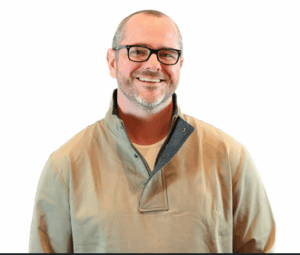 But did you know the company also is on the cutting edge of storage in other areas? Company information technology experts have pioneered a quicker, effective process to transfer the storage of data, which of course, is US Cold’s other most critical asset.
But did you know the company also is on the cutting edge of storage in other areas? Company information technology experts have pioneered a quicker, effective process to transfer the storage of data, which of course, is US Cold’s other most critical asset.
From coast to coast, US Cold sites have been converting from legacy warehouse management systems to US Cold’s new proprietary Phenix platform. Senior Software Implementation Manager Justin Michael describes the past data transfer as a “big bang approach.” It would take as many as 30 hours of hands-on activity to move a particular site’s data from legacy to Phenix with structured query language (SQL) insert scripts.
Michael notes that such a laborious process—inserting more than four million records at US Cold’s medium-sized facilities directly into the new database—did not always ensure data quality and accuracy. And when data discrepancies popped up, they soon required much more painstaking back work to resolve issues.
There had to be better way. Michael says one conversation led to a breakthrough shift. “The risks around data integrity and the workload on our development teams post migration were high,” he says. “A conversation between US Cold Vice President of Technology Bobby Kareer and Jeff Funk, General Manager, Quakertown East, PA, sparked our desire for an alternative approach where the sites could have more active participation in the conversion process.”
It was in fall 2024 that US Cold first tested a new Phenix as Self Service (PaSS) approach whereby it brings over the active inventory records using robotic process automation (RPA). Michael says this method uses front- end validation and simulates a user creating receipts, appointments, and radio frequency receiving.
“We are leveraging RPA flows using power automate to migrate data between systems. This is a first for any company in our industry,” notes Michael.
“Ultimately, the seamless transition between systems strengthens our relationship with our customers and an increased confidence in our IT deliverables.”
 Site-Specific Local Learning
Site-Specific Local Learning
Michael says PaSS allows sites to learn Phenix system functions in the context of customer expectations. As they configure the system for the customer requirements, they also can troubleshoot and analyze efficiency without customer disruption.
Ultimately, testing is paced so that it builds system familiarity through repetition and the overall system is multi-user friendly. “PaSS now allows the operational knowledge at the site to transfer to Phenix,” says Randy Tonge, a Phenix Implementation Supervisor who has been with the implementation group since 2019. “Users can continue to focus on the customer experience with minimal downtime for troubleshooting and learning the new system processes on the fly.”
US Cold began exploring the PaSS process in fall 2024 and Michael says it completed its first successful customer migration in April 2025 with Inventory Data Load (IDL) in production.
Contributing to the multi-faceted project were representatives of US Cold’s Development (Legacy, Phenix, RPA), Implementation, Product, Automation, and Quality Assurance groups.
Already in Use, From Texas to Tennessee (and Beyond)
Michael says that as many as 13 out of 21 remaining warehouses on US Cold’s Legacy system have begun their PaSS journeys. USCS Dallas converted its first account to Phenix in 2022 with a traditional data migration model. After utilizing PaSS, he says Dallas has converted more than 30 customers just since June 2025. Elsewhere, a continuous improvement team spurred USCS La Vergne, TN, to start its PaSS journey in spring 2025.
With more direct project management and a dedicated implementation team La Vergne since has converted 20 customers to Phenix. “The current wave of PaSS warehouses all have volunteered to participate in this new strategy,” says Michael. “We are working with 13 warehouses overall and eight of them have actively converted accounts to Phenix (Dallas, Fort Worth and Denton, TX; Tracy, CA; La Vergne, TN; Bethlehem, PA; Lebanon and Hebron, IN).
“I’ll credit the management groups at La Vergne and Dallas, which had aggressive goals for 2025 to convert all accounts from Legacy to Phenix,” he adds. “Dallas is on track to complete that goal in mid-December and La Vergne should be fully converted in the first quarter of 2026.”
And how are US Cold’s processor-shipper customers experiencing the program?
“There are fewer system issues for customers converting with the PaSS program,” says Michael. “Service levels at the sites are less likely to decline or suffer failures due to system issues. This results in on-time schedules and we maintain high levels of inventory accuracy.
“Many of our customers that have already been migrated had forgotten that a conversion had even taken place,” adds Dan Regnart, General Manager, USCS Dallas.
Looking Ahead
Michael and others already have goals in mind for 2026.
“We have a very aggressive goal to fully convert seven more warehouses via PaSS next year,” he says. “For this to be realistic, we will need warehouses to dedicate time and resources as they validate and configure accounts in Phenix. In addition, our development team will need to deliver on our CSC integration, Labor Management System (MARC) integration and automation solutions.”
Michael closes with a nod to his many US Cold colleagues.
“I want to give a special shout-out to our implementation team, IDL development group, EDI team, support team and our sites for their efforts to make this initial year with PaSS a successful one. I have high expectations that together we can achieve great things in 2026 and beyond.”
Summit Experience
USCS Engineering Summit embraces teamwork, new technologies and more.
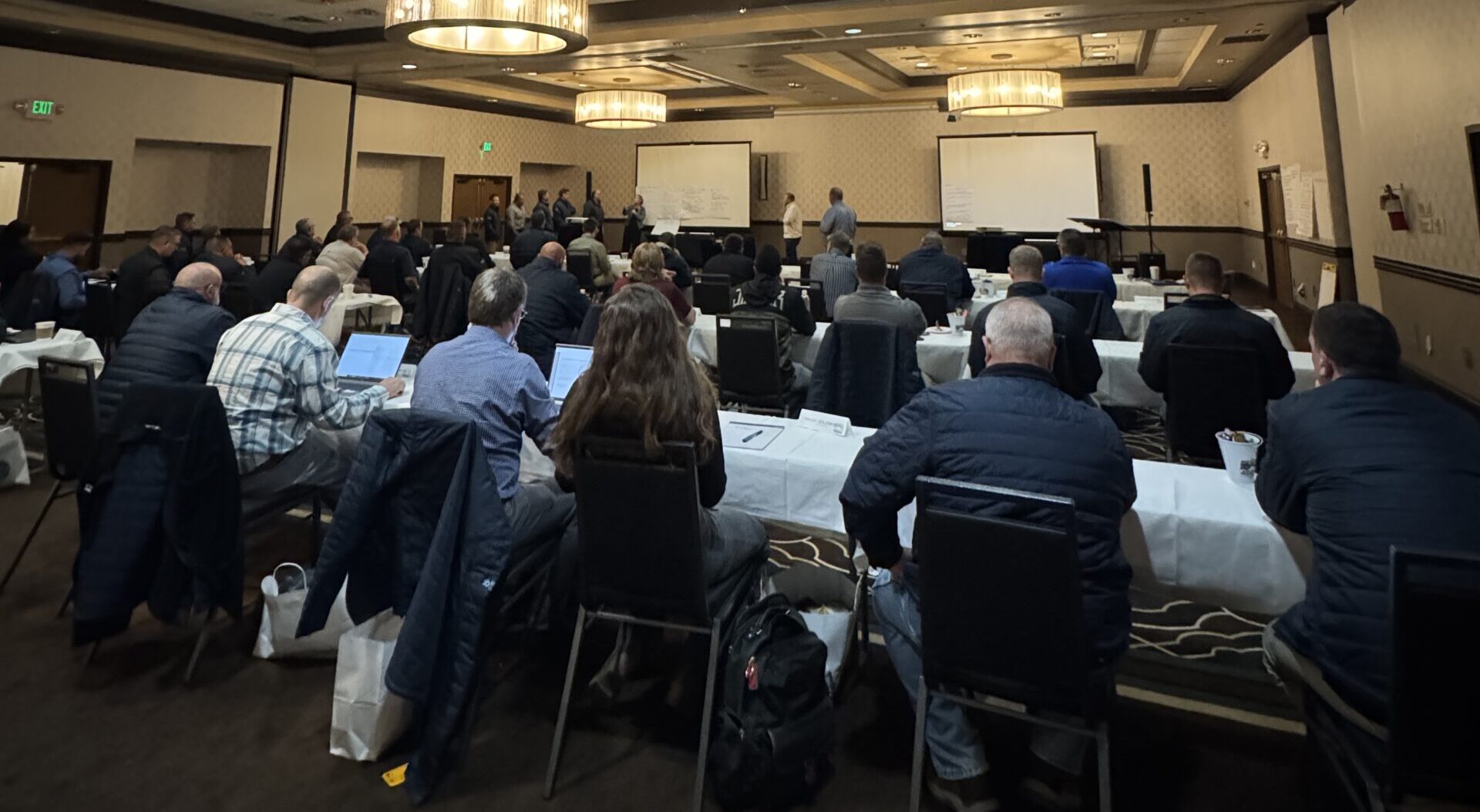
Perhaps it goes without saying but often the best “outside-the-box” thinking requires a change of scenery. And when your company has a coast-to-coast presence, true team building means literally gathering those team members together.
That’s just what happened as USCS hosted its fourth annual Engineering Summit, a four- day event, Sept. 29-Oct. 2, in Lake Tahoe, NV. Undoubtedly a high point for USCS’s engineering group, it literally was a summit at high altitude nestled in the Sierra Nevada mountains between California and Nevada.
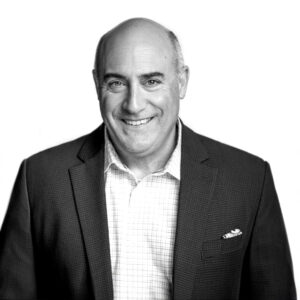 “We host our Engineering Summit to share best practices and ensure our engineering teams are up to speed on the latest technologies,” says Mike Lynch, Senior Vice President of Engineering. “We also want to provide a forum for discussion, camaraderie, and team building.”
“We host our Engineering Summit to share best practices and ensure our engineering teams are up to speed on the latest technologies,” says Mike Lynch, Senior Vice President of Engineering. “We also want to provide a forum for discussion, camaraderie, and team building.”
The 2025 event drew 69 attendees including 63 USCS employees and six vendor representatives. USCS participants included chief engineers, project engineers, regional and area engineers.
Also attending were USCS executives and managers leading automation, process safety, compliance, sustainability, maintenance and reliability.
USCS functional leaders led presentations on Lock Out/Tag Out safety matters, procurement, maintenance, sustainability and Very Narrow Aisle (VNA) automation technologies. Additional guest speakers shared in-depth views about refrigeration controls and valves (Hansen Technologies), new quick-freezing technology (Tippmann Engineering) and forklifts and material handling equipment (Crown Equipment Corp. and MHS Lift).
The summit closed Thursday morning with “best practices” presentations from each of USCS’s four regional engineering groups. Each team presented examples of cost saving initiatives as well as innovation project ideas.
Of course there’s learning—but how about laughing as well? The agenda also incorporated numerous team-building activities for camaraderie. They included dinners as well as an exclusive, Wednesday afternoon boat cruise on Lake Tahoe. Lynch thanked three executives for preparing the event: Elena Castellanos, Regional Safety Manager-West; Jim Duffy, Senior Manager, Engineering, Transformation and Development; and Eric Andrade, Regional Engineer-West.
“Each year our Summit is better and better and I thank Elena Castellanos, Jim Duffy and Eric Andrade,” says Lynch. “Their involvement brought additional insight and focus to the Summit planning and execution. The location was perfect. It added the majestic, natural aspects of Lake Tahoe with an insightful and fun agenda.”
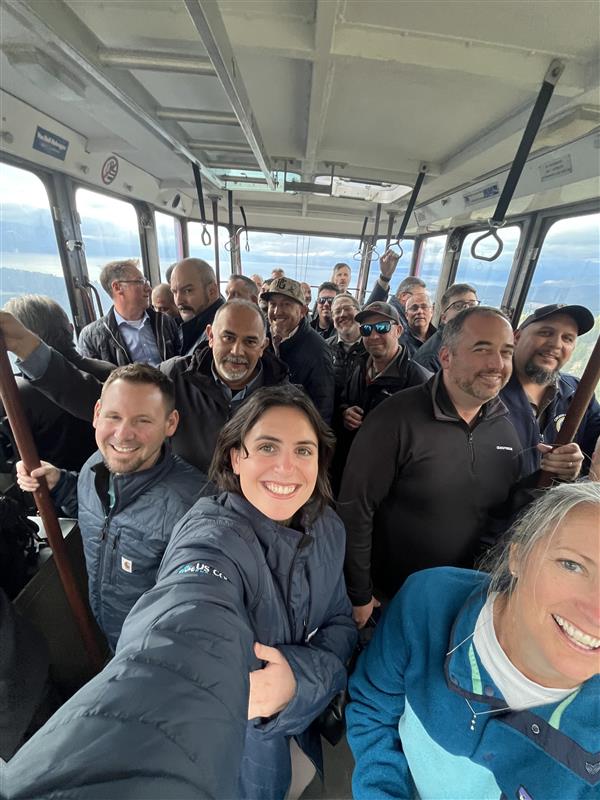
Texas Two-Step
USCS Laredo, TX, eyes step-change improvement with new distribution services.
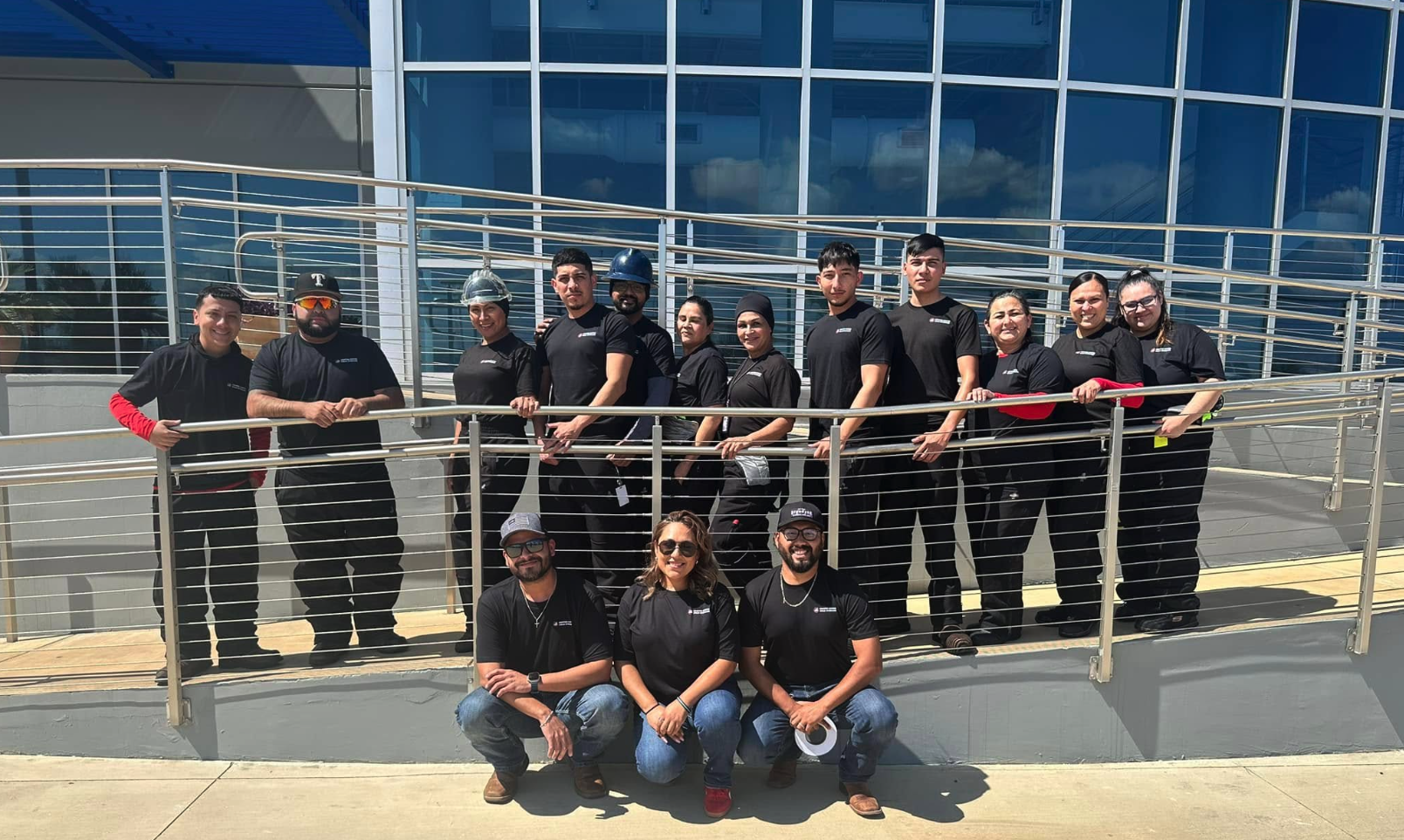
They say when the going gets tough—the tough get growing. Pardon the play on words but that’s just what’s happening at USCS Laredo, TX.
Some reports rank Laredo as the nation’s leading port for total trade volume and say it handled more than $339 billion in trade in 2024. It is the nation’s leading gateway for goods entering the U.S., particularly from Mexico. Every day, USCS’s three Laredo facilities collectively handle between 150 to 200 trade-related appointments.
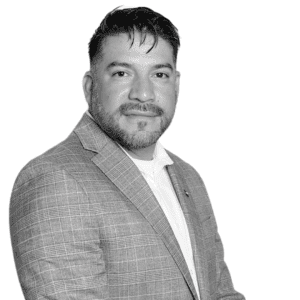 “Our USCS Laredo sites provide our current and potential customers an advantage not offered by competitors,” says Carlos Stern, USCS Regional Vice President-Southwest. “We provide attention to detail for their product that is synonymous with the ‘Best in Cold’ service United States Cold Storage is known for. Our Laredo facilities give customers the ability to have their partners and suppliers across the border bring in raw materials/finished goods to a provider they know and can depend on. All with the peace of mind that our standards are as stringent as their own.”
“Our USCS Laredo sites provide our current and potential customers an advantage not offered by competitors,” says Carlos Stern, USCS Regional Vice President-Southwest. “We provide attention to detail for their product that is synonymous with the ‘Best in Cold’ service United States Cold Storage is known for. Our Laredo facilities give customers the ability to have their partners and suppliers across the border bring in raw materials/finished goods to a provider they know and can depend on. All with the peace of mind that our standards are as stringent as their own.”
He adds, “On the other side of the coin, we offer a strategic location that lends itself to helping customers ship their products into Mexico and further South to serve the Latin American Market with forward-deployed inventory at a location that provides all the services needed to export goods under one roof. With the frozen and refrigerated food demand growing in this part of the world we want to make sure our partnership with our customers is one that allows them the ability to grow their market share in this region.”
As more freight forwarders and customs brokers also add USDA import-export handling, it’s become time for USCS Laredo to grow in new directions. Providing that context for change is Gerardo Palencia,
General Manager for two of three USCS Laredo sites.
“We have close to 40 years of experience servicing the area, with a team that has the knowledge base of what is required to facilitate import-export activity,” he says.
“We are in tune with what the market needs for successful international trade and we provide high-quality service levels that USCS customers are accustomed to at any of our other sites across the nation.”
For the record, USCS Laredo operations already offer complete logistics planning as well as brokerage and custom analytics services.
So how can USCS Laredo distinguish itself from area competition?
“In 2026, we expect to add transportation services out of Laredo—specifically into major retailer distribution sites,” says Palencia.
“This will help us make strategic shift from how we’ve historically handled business in Laredo and at the border. It will allow us to minimize exposure to threats that impact volumes on international trade. Our plan is to create strategic partnerships and solutions for U.S. retailers through consolidation of their inventory from multiple international vendors at our facilities.”
Stern adds, “Many Laredo customers may not know their shared suppliers or fellow processor-shippers also store with USCS in other sites in the network. That opens up possible cost-saving solutions through our Transportation Services. We could handle their transportation services to reach a shared customer, or we could even use or USCS Logistics Group to arrange raw materials transportation to their production sites.”
Get a Quote for Laredo


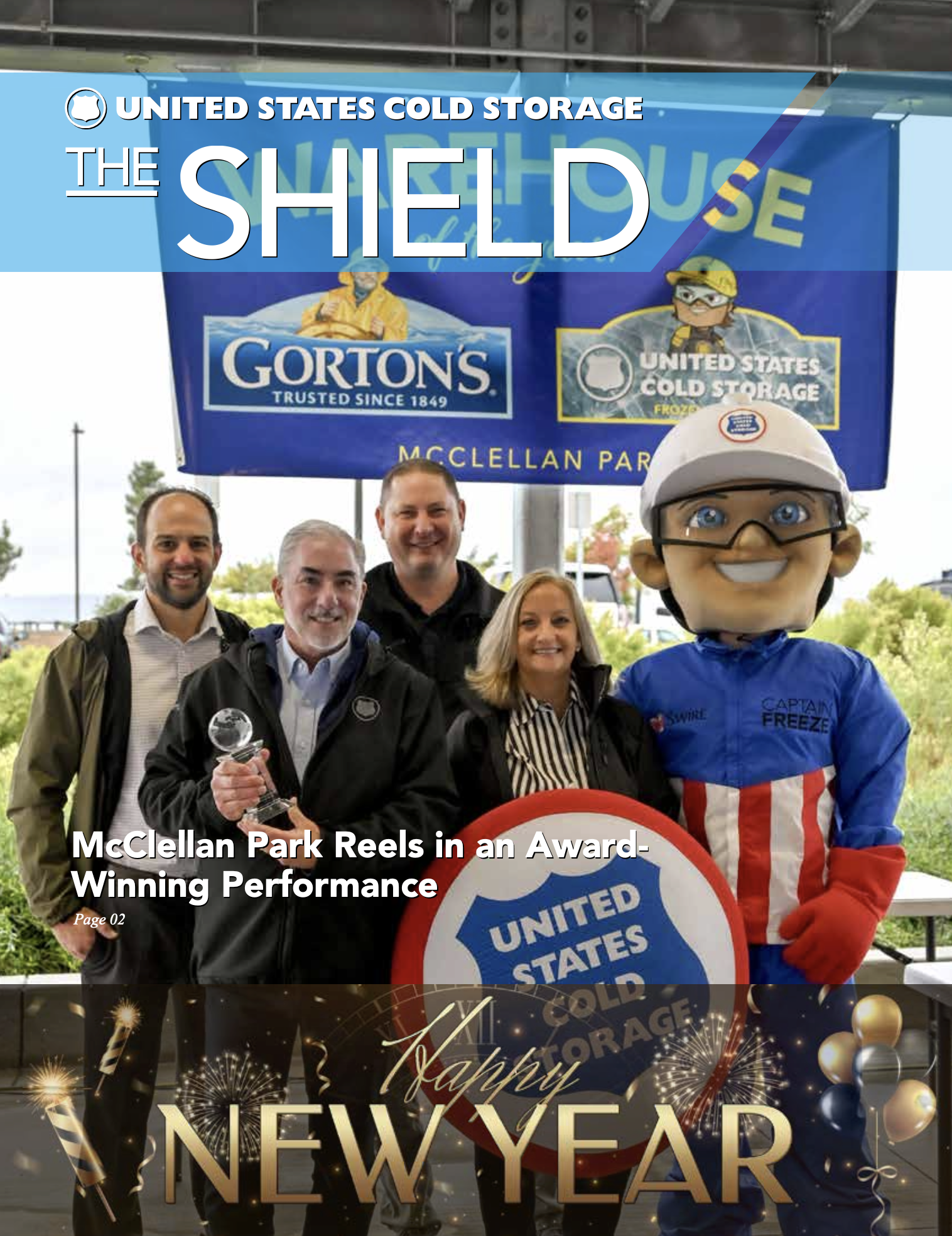
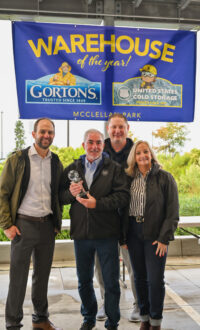
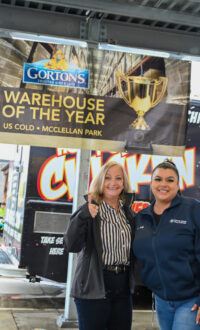
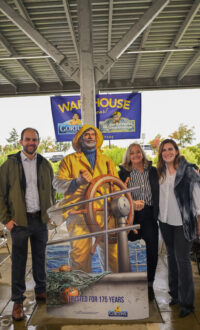
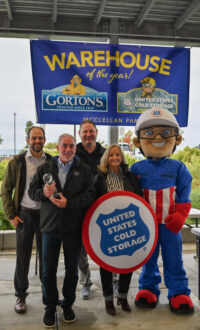
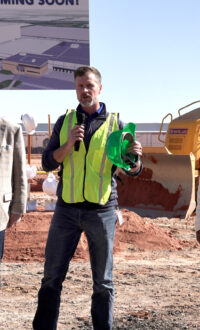
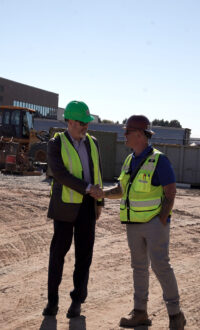
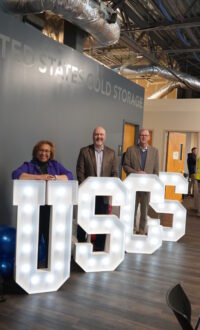
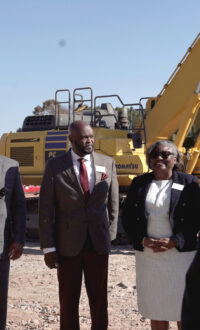
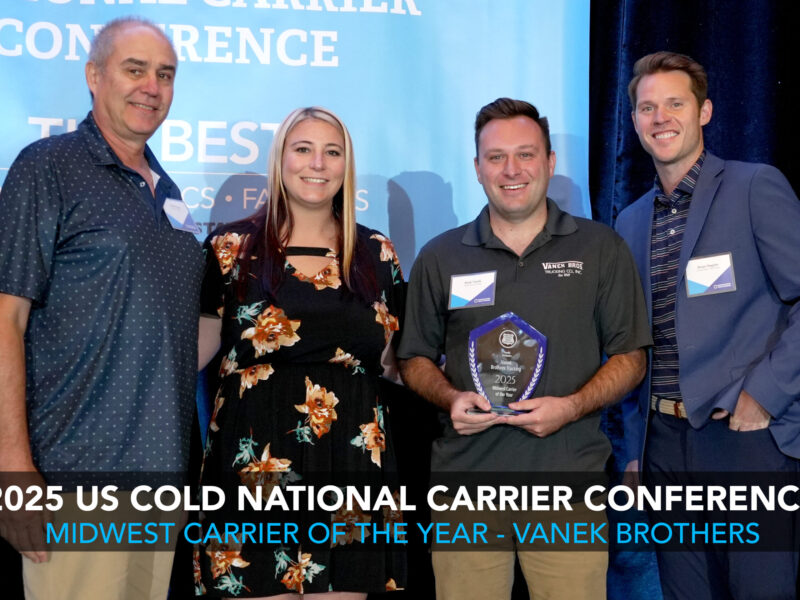
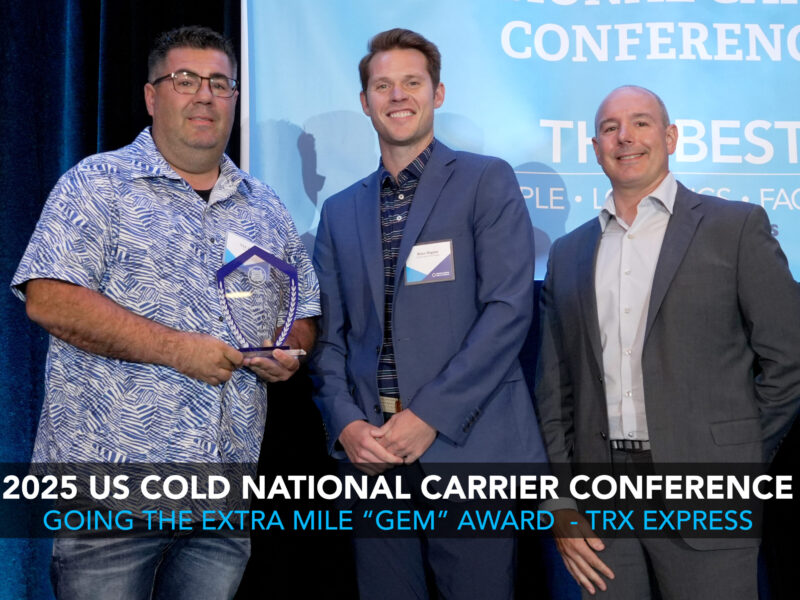
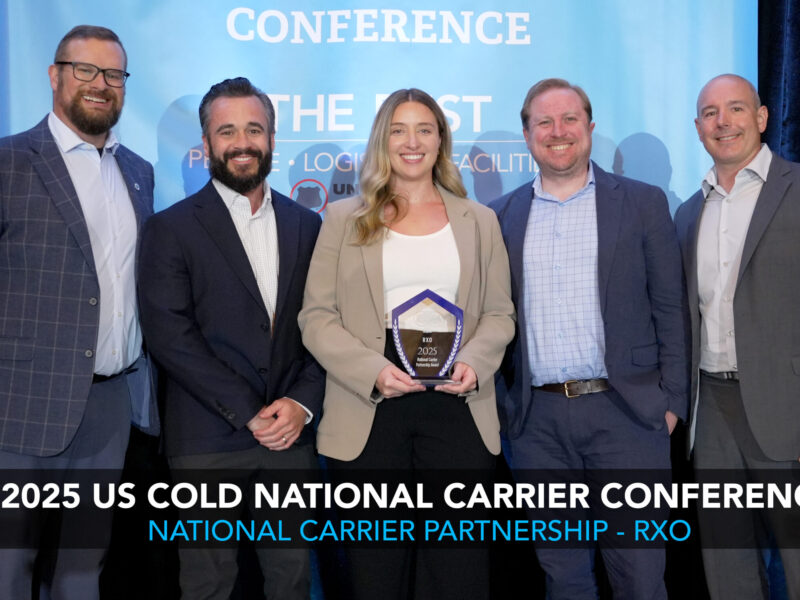
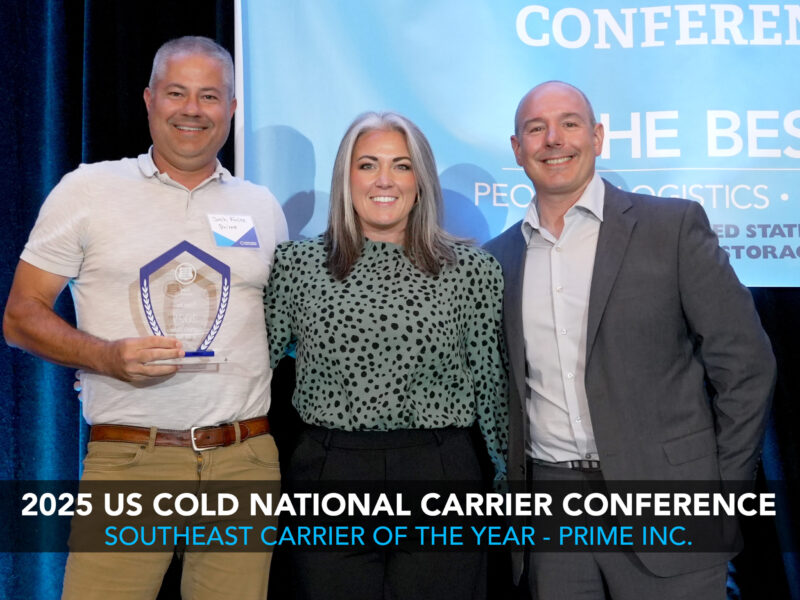
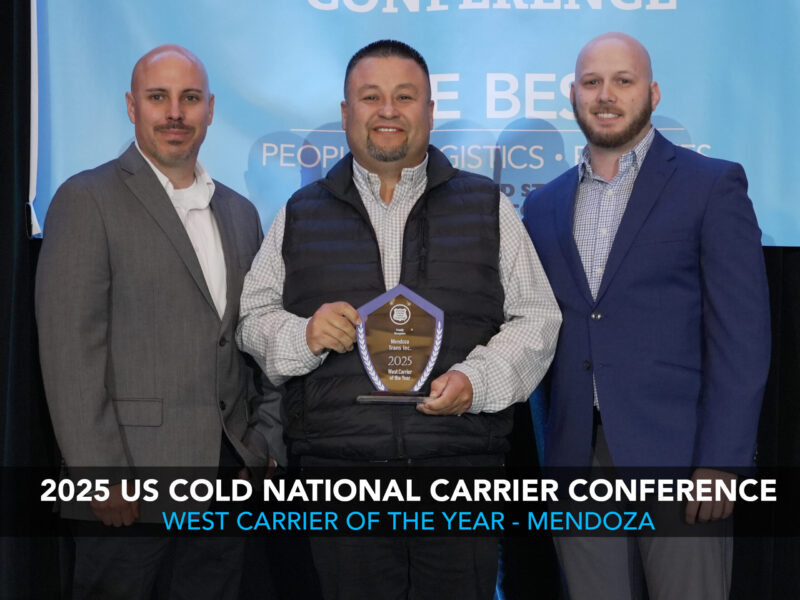
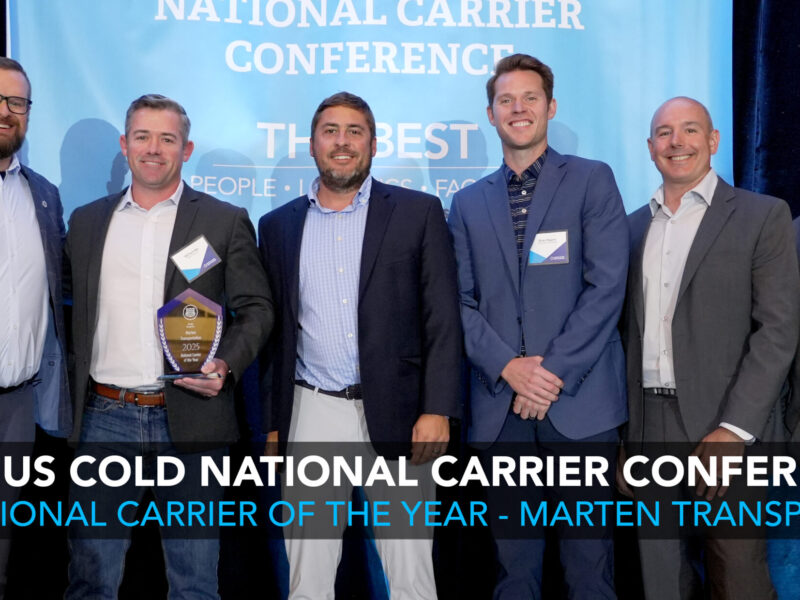
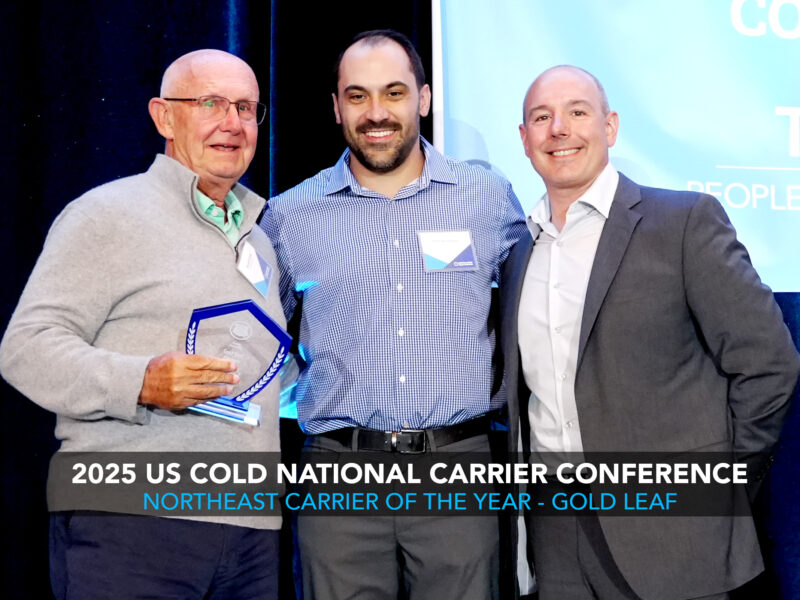
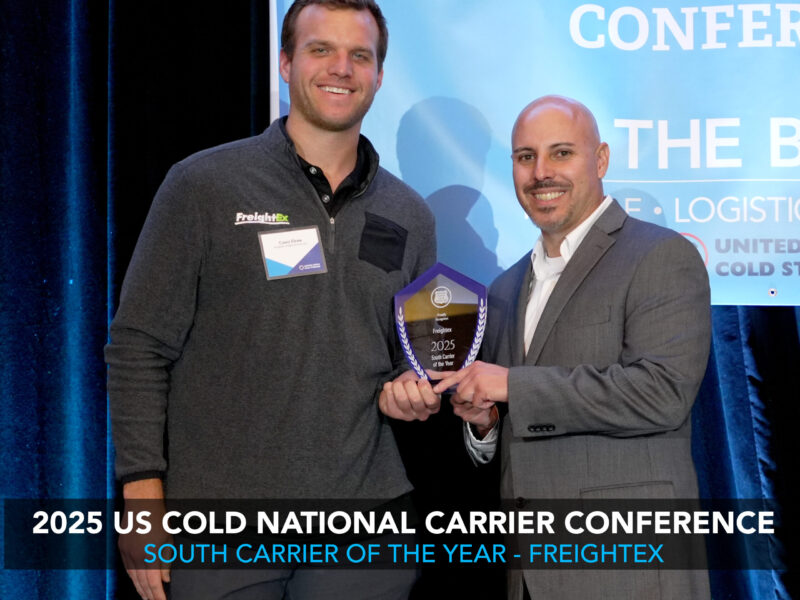
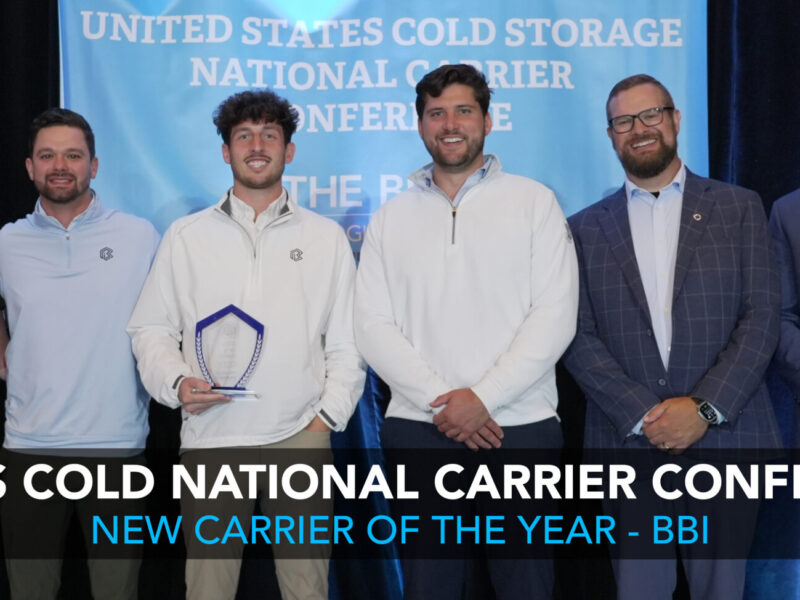
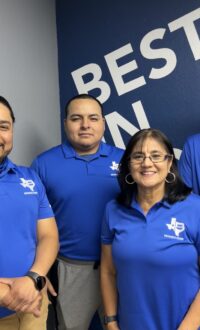

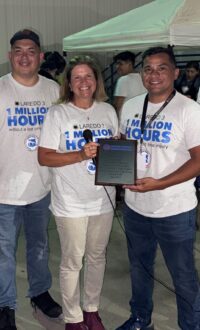

 In our Q3 Issue, we present:
In our Q3 Issue, we present:
